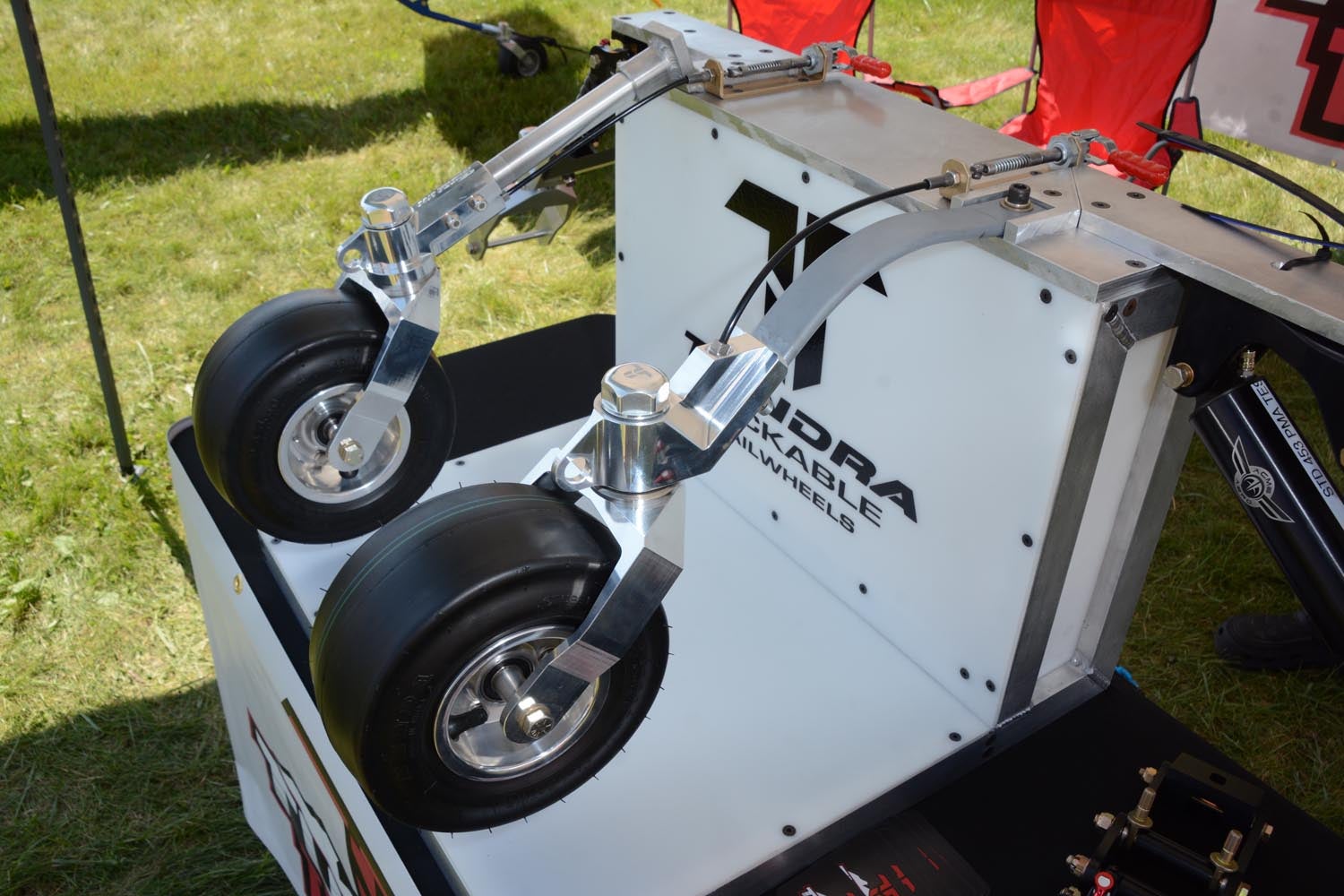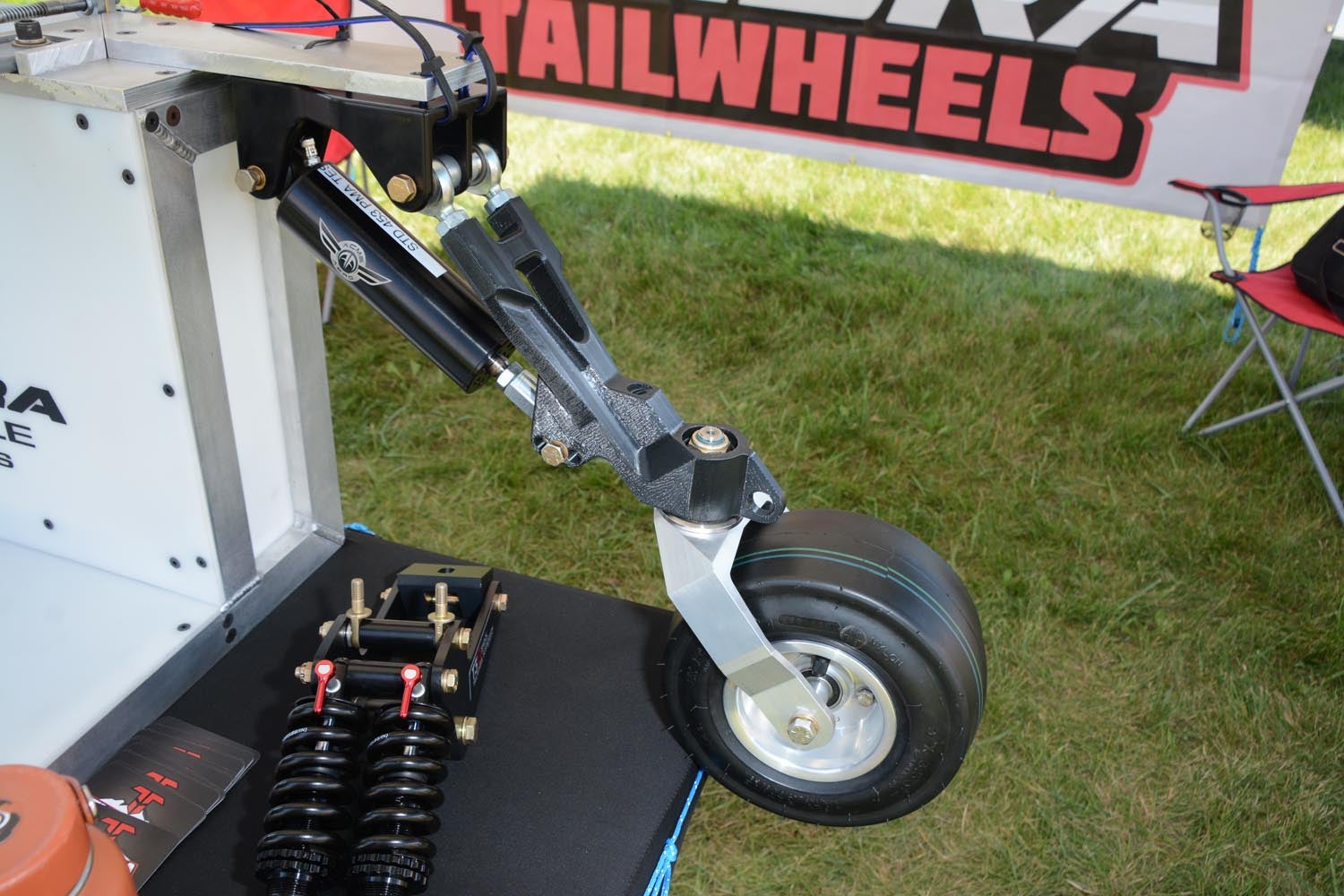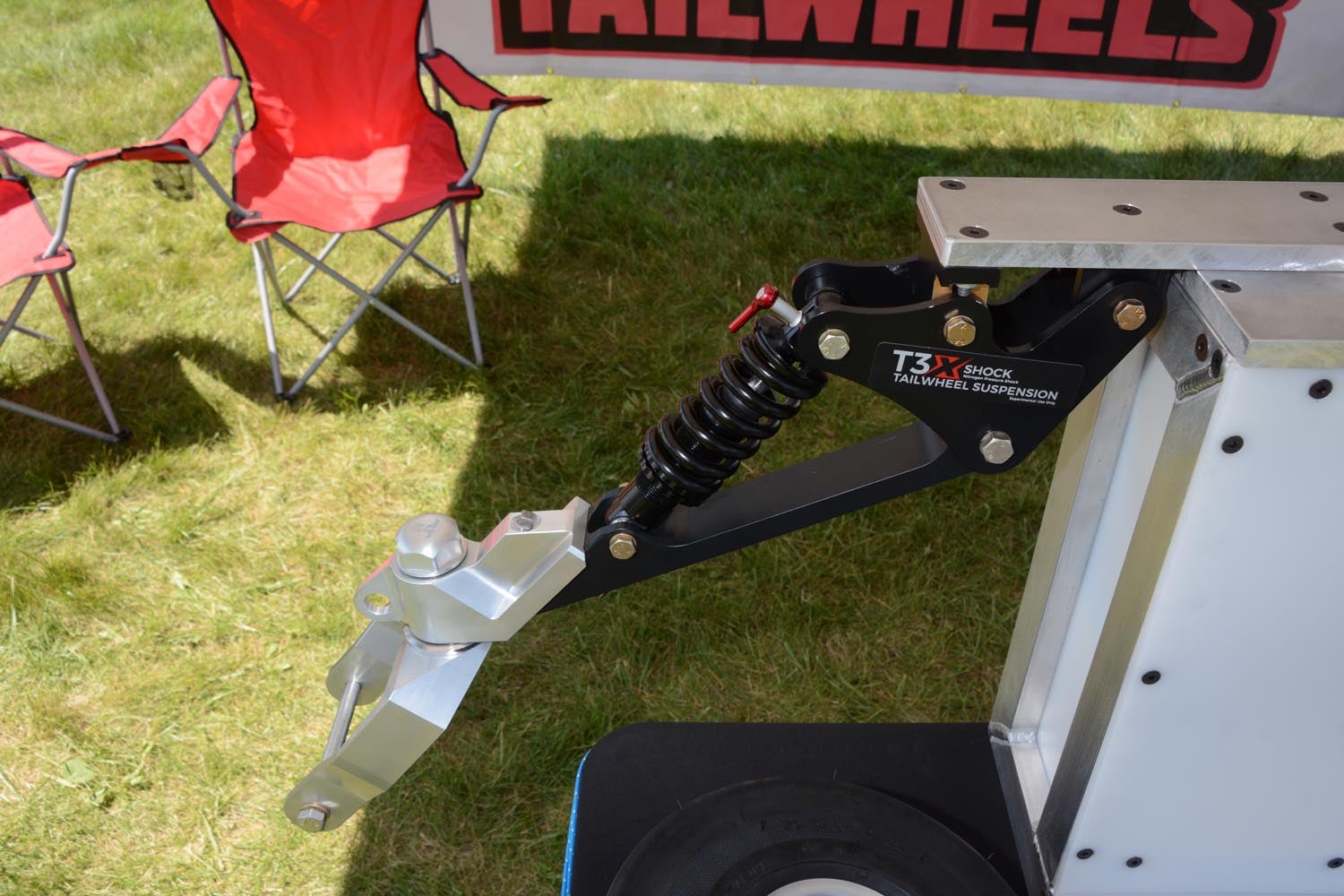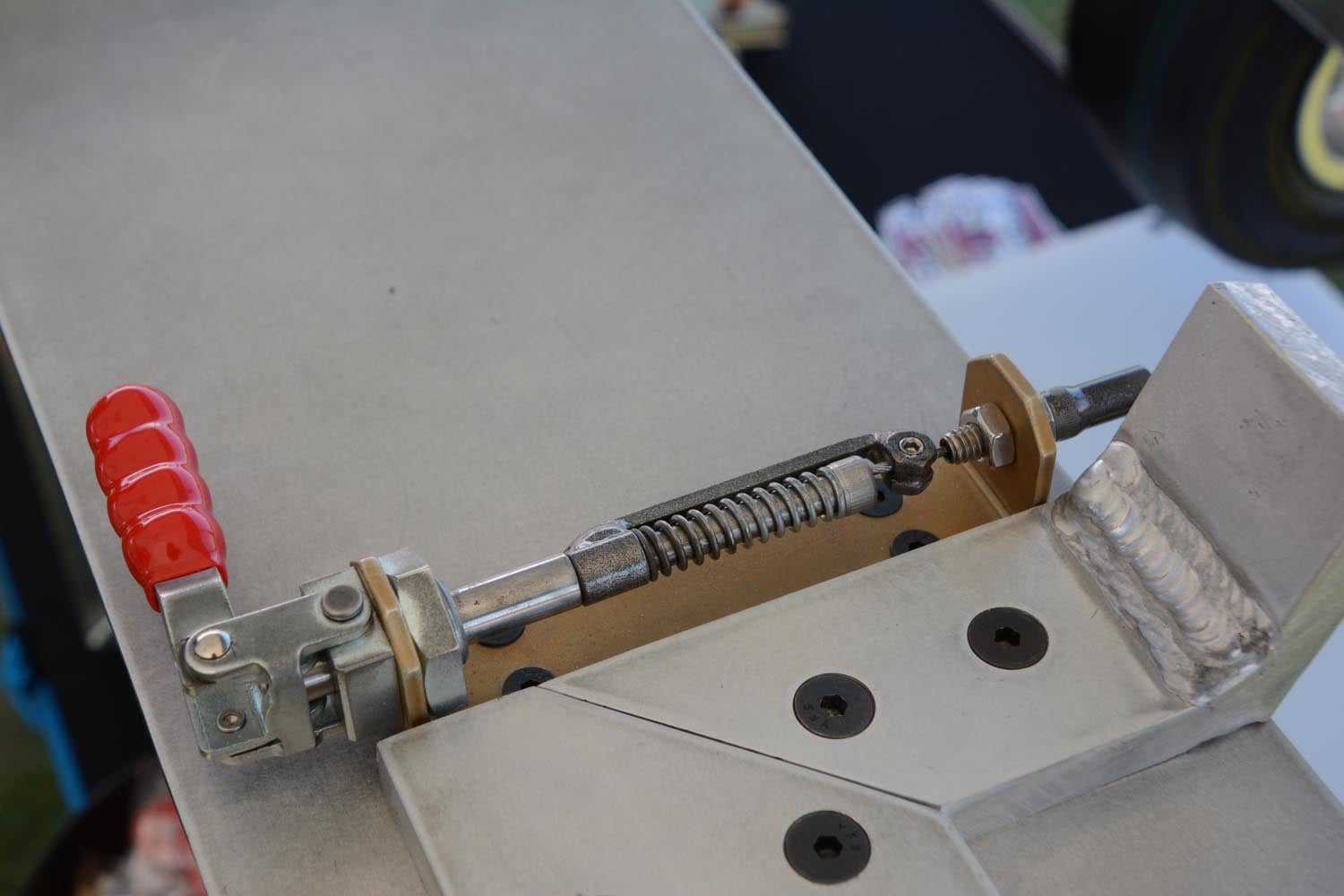
Steve Henry, famous as the champion STOL Drags pilot in the screaming yellow Highlander, has bought Tundra Tailwheels at the invitation of founder Jim Pekola. Steve is no stranger to Tundra Tailwheels, having used them exclusively on his yellow race plane for many years.

Managing Tundra Tailwheels is Josh Richling who ran us through the company’s line of no excuses off-road tailwheels. All are hewn from billet to a showy finish, but built to withstand incredibly difficult terrain. Josh showed us photos of these tailwheels navigating foot-diameter river rock in Alaska, so they shouldn’t have much trouble with that gap between the asphalt and your hangar door.
Also billet are the wheels. Previously these were spun aluminum, but those suppliers have gone to military contracts so Tundra pivoted to billet wheels. The rims feature an internal channel for increased tire retention (won’t spin on the rim).

All Tundra Tailwheels are lockable using a simple cable system. The latch is a suitably thick tang and slot arrangement; locking and release seemed low effort and definitely positive when playing with it in the Tundra Tailwheels booth. When unlocked these are full castoring wheels, so light rudder inputs are needed to initiate directional changes at taxiing speeds; rudder authority is sufficient during take off. Otherwise these wheels simply castor to trail behind the airplane; no rudder horn, springs, chains or other interconnections are needed or provided. This accounts for their clean appearance and saves weight.

Besides robustness the Tundra Tailwheels are wide and flat for increased traction. This pays off in multiple ways, says Josh. There’s increased stability in normal operations both because of the much larger contact patch and the wide, flat tire tends to roll straight unlike the more rounded tire on conventional tailwheels. Crosswinds aren’t as bad, taxiing on glacial side slopes (there are people who routinely do such things) is definitely more positive and Josh even cites pushing the airplane backwards into the hangar is more directionally stable.
For the truly adventure jaded there is a 10-inch tire option. It’s good for those foot diameter river rock landing spots. Let’s hope you don’t have to pitch a tent there.
Fitments for flat springs, tubular spring, T3X and ACME Aero are available. Pricing is $1,695 for the wheel, tire, fork and mounting (everything but the tail spring); the 10-inch tire is a plus $50 option.
More information: tundratailwheel.com













